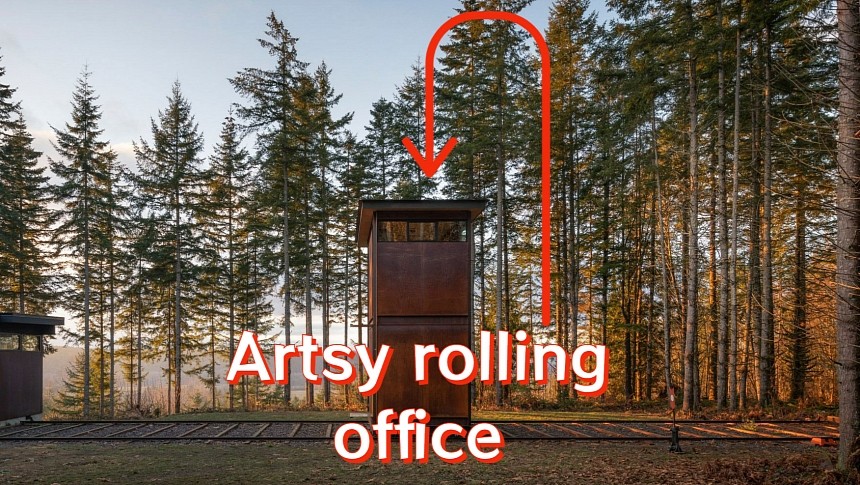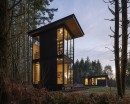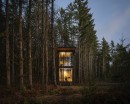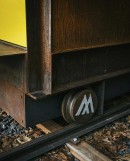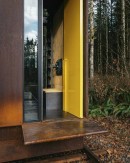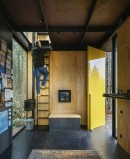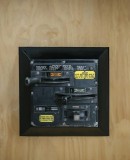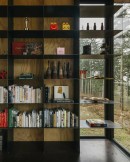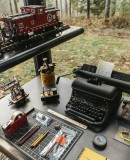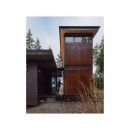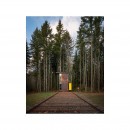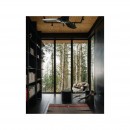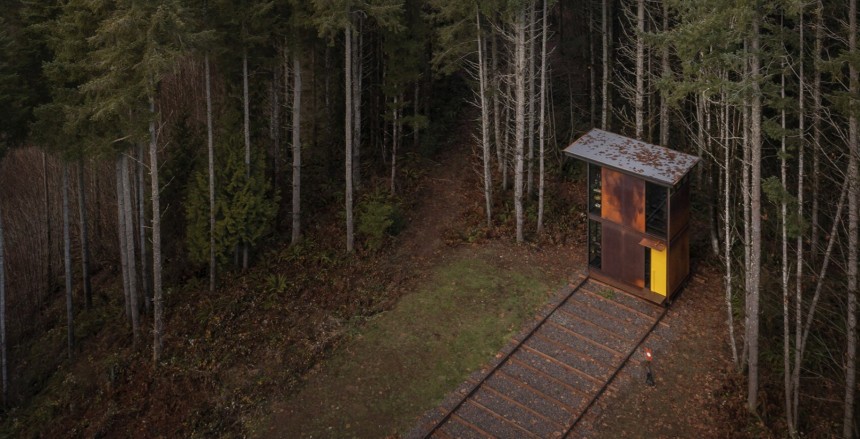Many of us would give a limb for the chance to do away with the daily, sometimes too stressful and time-consuming commute to and from work, but not the owner of the Maxon House. He actually had a moving office built that would replicate the work commute by moving, and himself with it, away from the house.
Maxon House is a well-known private home in Carnation, Washington, designed by the world-famous Seattle-based architect Olson Kundig. The owner is Lou Maxon, a man with a very specific taste when it comes to housing, so Maxon House is influenced by the rich local railway history in both materials and styling.
As of 2022, the House has a Studio to match, but its existence has only been revealed to the public now. Us normies have to make do with a small desk in one of the rooms or even the kitchen table if we work from home, but rich people can afford an office slash studio housed in a different, preferably, brand new structure. If they're rich enough, they can even have that structure move independently from the house, attaching and detaching itself from the main structure on a whim.
This takes mobile living to a whole new level, and it's a very visually striking one with zero compromises on functionality.
This is not the average tiny house or any other type of mobile housing alternative; this is how you take mobile living and elevate it to the level of art by turning it into a statement. Maxon Studio is a railway-inspired mobile studio that moves under its own power, serving the goal of moving away from the house and into the woods so it can recreate the experience of commuting, separating home from work.
It's true, the movement isn't impressive either through speed or distance covered, but hey, this is a building that moves. That alone is enough to impress!
The two-story metal tower is inspired by railway history and filled with train artifacts, from the upcycled control panel to the train scale models scattered around, the plywood walls, and the paint on the door. The ground level serves as office, with a desk facing a picture window and plenty of room to move around. The second level can only be accessed by ladder and doubles as a private sanctuary: a place where the owner retires to think, be alone, or simply take in the views.
Design principal Tom Kundig of Olson Kundig Architects says that the moving metal tower is like the modern interpretation of a train caboose, where the conductor could work in peace and unwind and relax. It's less fast and way more spacious, not to mention luxurious, but the comparison holds.
Besides honoring the rail industry legacy of the region, Maxon Studio is also an excellent example of upcycling. For instance, the control panel is an old one from a Burlington Northern locomotive, shipped all the way from South Korea after Maxon found it on eBay, and rewired to work for this purpose. There's a lever for adjusting direction and a lever for speed, while the former lever for braking has now been repurposed to activate a dumbwaiter on a pulley inside the tower to lift heavier objects from the ground level to the second one. Another good example in this sense is the wooden railroad ties, which are authentic and sourced from a Great Northern Railroad relay line.
To further tie in with the railway/caboose theme, the yellow paint on the door is the original DuPont paint color from the striping on Great Northern trains, the interior is plywood like in old cars, and the exterior is all-metal. That last part was essential to have the Studio match the House. Even if it can – and does – move away from it with ease, they're still part of the same unit.
On considerations of safety, the Studio integrates a stabilizing bar that keeps it from toppling over in case of an earthquake. The details of the project don't include mentions of the budget because this was a private commission, but if we were to guess, we'd say it wasn't cheap, considering Kundig's involvement and the many vintage elements incorporated into the final build.
Just as impressive as the execution of this moving studio is the way in which it came about. As Kundig recalls, it all started with a joke about whether they should "deploy” the owner into the forest while discussing the importance of the commute experience when designing a working space. Kundig meant it as a joke, but Maxon saw it as an idea with great potential, so they were soon working on finding a way to make that happen.
The result is Maxon Studio, a railway-inspired office structure that moves under its own power and, in the process, takes every notion we might have had of a mobile house and spins it on its head. Here's this moving office in motion: it surely has the regular commute beat!
As of 2022, the House has a Studio to match, but its existence has only been revealed to the public now. Us normies have to make do with a small desk in one of the rooms or even the kitchen table if we work from home, but rich people can afford an office slash studio housed in a different, preferably, brand new structure. If they're rich enough, they can even have that structure move independently from the house, attaching and detaching itself from the main structure on a whim.
This takes mobile living to a whole new level, and it's a very visually striking one with zero compromises on functionality.
It's true, the movement isn't impressive either through speed or distance covered, but hey, this is a building that moves. That alone is enough to impress!
The two-story metal tower is inspired by railway history and filled with train artifacts, from the upcycled control panel to the train scale models scattered around, the plywood walls, and the paint on the door. The ground level serves as office, with a desk facing a picture window and plenty of room to move around. The second level can only be accessed by ladder and doubles as a private sanctuary: a place where the owner retires to think, be alone, or simply take in the views.
Besides honoring the rail industry legacy of the region, Maxon Studio is also an excellent example of upcycling. For instance, the control panel is an old one from a Burlington Northern locomotive, shipped all the way from South Korea after Maxon found it on eBay, and rewired to work for this purpose. There's a lever for adjusting direction and a lever for speed, while the former lever for braking has now been repurposed to activate a dumbwaiter on a pulley inside the tower to lift heavier objects from the ground level to the second one. Another good example in this sense is the wooden railroad ties, which are authentic and sourced from a Great Northern Railroad relay line.
To further tie in with the railway/caboose theme, the yellow paint on the door is the original DuPont paint color from the striping on Great Northern trains, the interior is plywood like in old cars, and the exterior is all-metal. That last part was essential to have the Studio match the House. Even if it can – and does – move away from it with ease, they're still part of the same unit.
Just as impressive as the execution of this moving studio is the way in which it came about. As Kundig recalls, it all started with a joke about whether they should "deploy” the owner into the forest while discussing the importance of the commute experience when designing a working space. Kundig meant it as a joke, but Maxon saw it as an idea with great potential, so they were soon working on finding a way to make that happen.
The result is Maxon Studio, a railway-inspired office structure that moves under its own power and, in the process, takes every notion we might have had of a mobile house and spins it on its head. Here's this moving office in motion: it surely has the regular commute beat!
